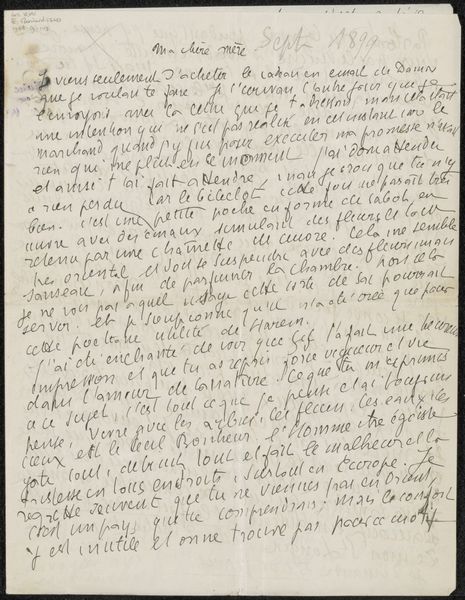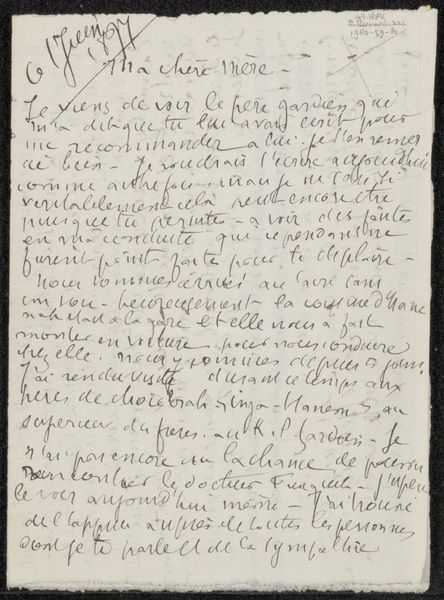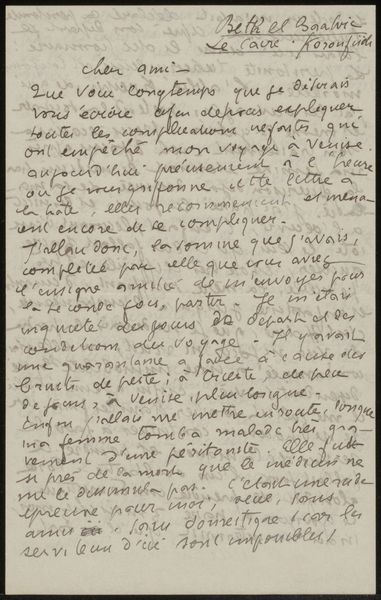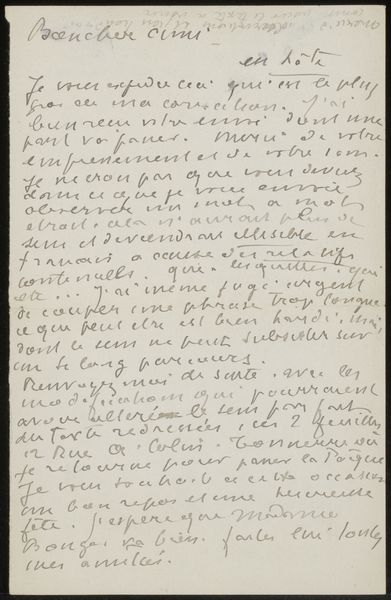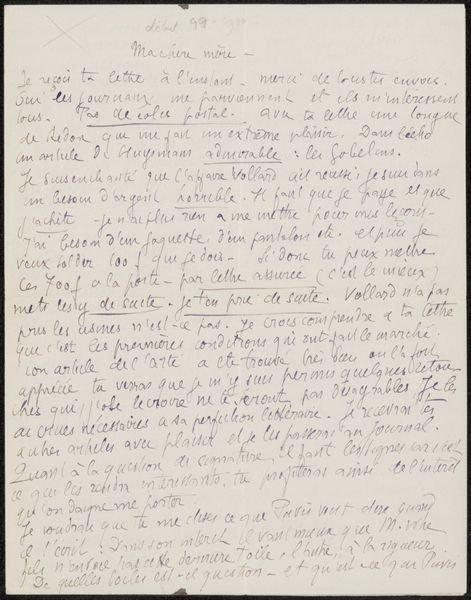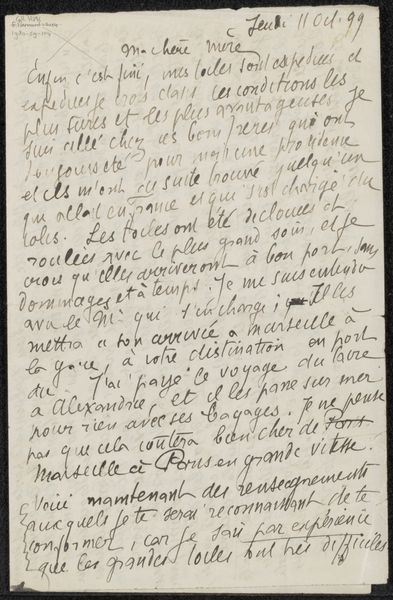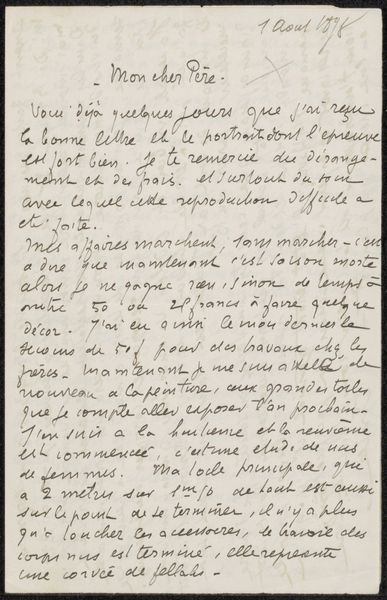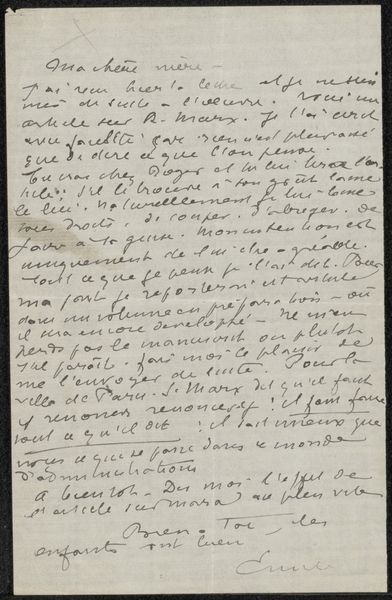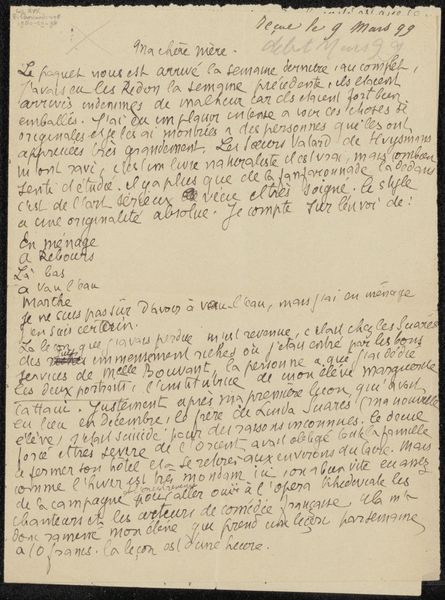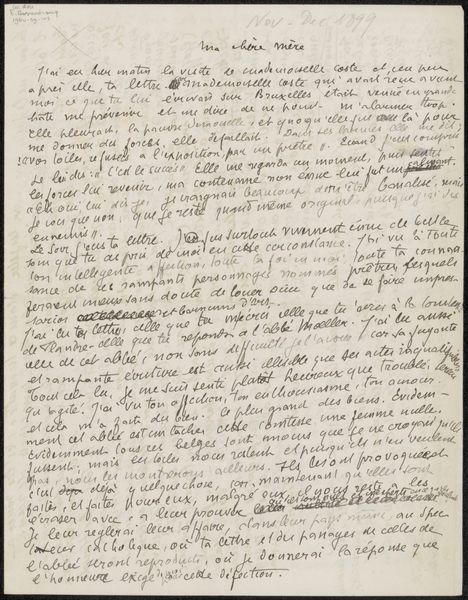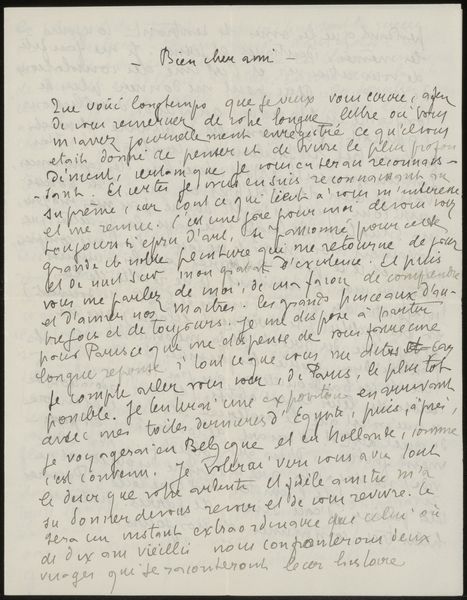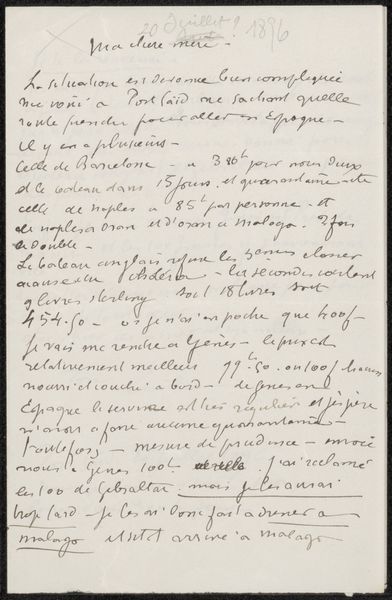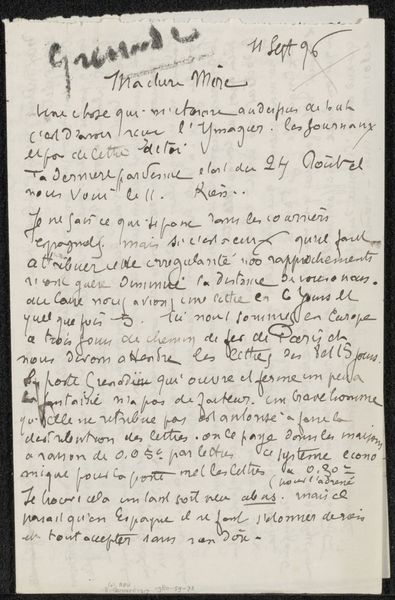
drawing, paper, ink
#
drawing
#
ink paper printed
#
paper
#
personal sketchbook
#
ink
#
intimism
#
ink colored
Copyright: Rijks Museum: Open Domain
Curator: We're looking at "Brief aan Héloïse Bernard-Bodin," a letter crafted by Émile Bernard sometime between 1878 and 1941, composed with ink on paper. Editor: It looks more like a private document than fine art to my eye. It evokes a sense of intimacy—the cursive handwriting, the staining of the paper itself—almost feels like an invasion of privacy. Curator: Yes, precisely! Bernard’s sketches and personal writings reveal an 'intimism' that draws the viewer into the artist’s immediate, personal world. Letters, by their nature, communicate personal matters and reflect their author's sentiments and state of mind, the artist creating these visual signs in an epistolary code for Héloïse. Editor: Focusing on materiality, you can really feel how cheap these materials were; like scrap paper. Perhaps this very transience conveys a disregard for posterity – which then loops back into the idea of a private world closed off from us. The material and context are deeply intertwined here, as both speak to its immediacy and the close connection between writer and receiver. Curator: Indeed. The use of ink, as opposed to paint, suggests an unmediated and fluid transmission of his thoughts; the visible brushstrokes themselves echo those ideas. Also notice how it seems 'printed', which tells us the writer wants this to be seen by other people, copied or saved. This complicates this apparent "private" world that we thought we were initially spying on! Editor: So the material suggests not only intimate content but a level of social accessibility? Or the aspiration for it, at least? How does this bridge his relationship to Héloïse and society's potential response to them both? Fascinating the threads revealed through such close readings. Curator: A material analysis helps in demystifying, but considering those signs gives the letter a strong, emotive quality. Both are tools of meaning-making for intimate and public reflection. Editor: Absolutely. It reframes my appreciation; it reveals more than just casual correspondence between intimates—it exposes artistic identity emerging at that moment and material choices and conditions in shaping intimacy, ideas, and art itself.
Comments
No comments
Be the first to comment and join the conversation on the ultimate creative platform.
